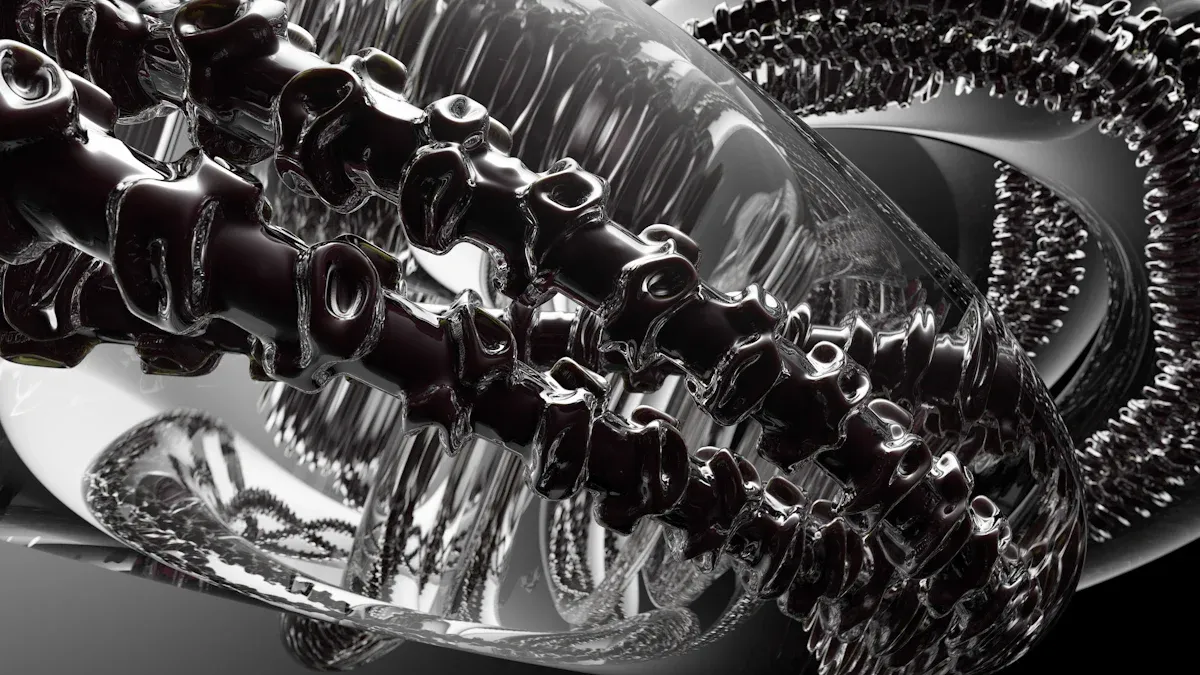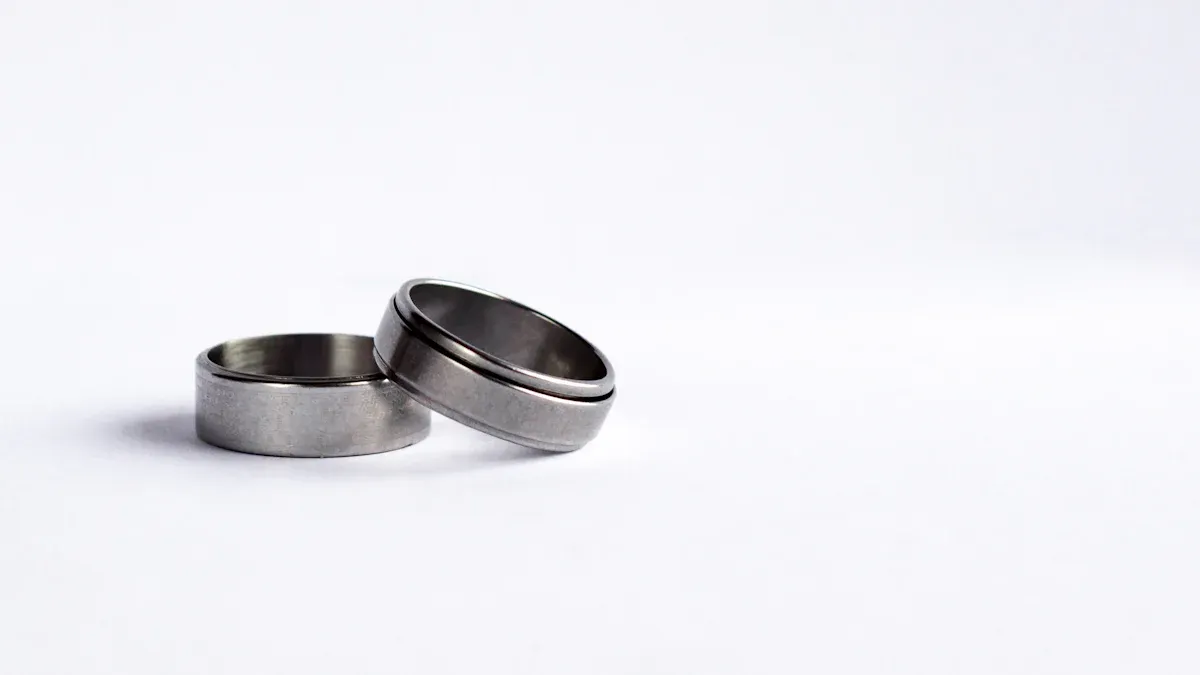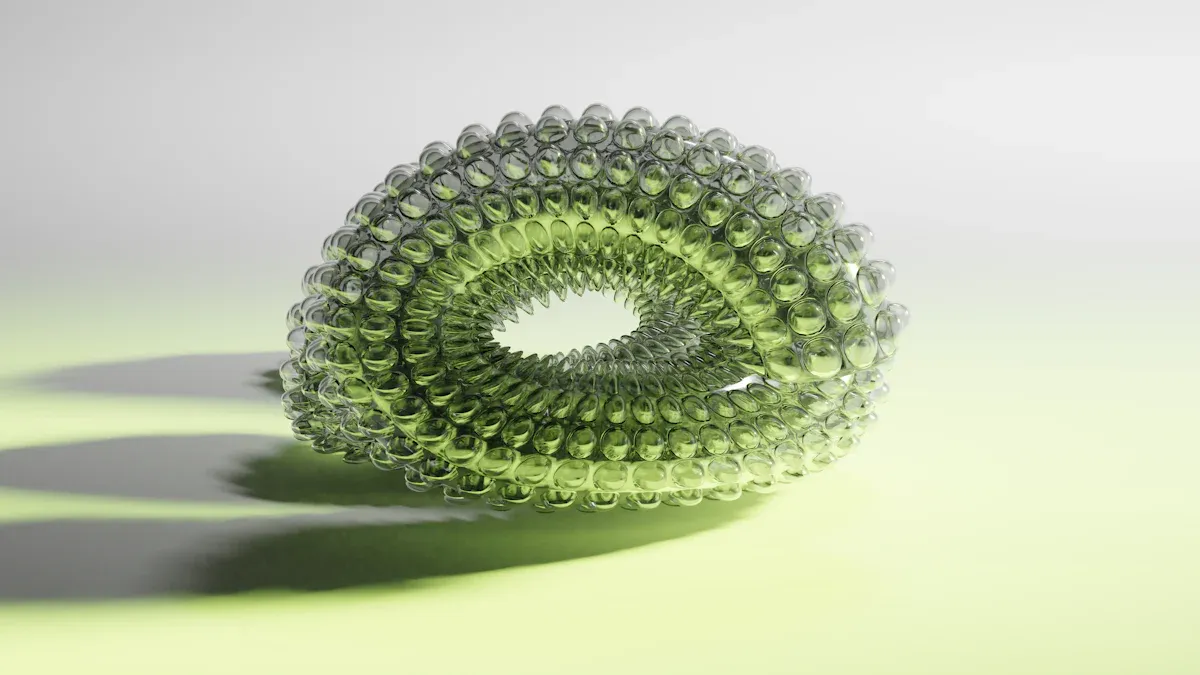
Titanium 3D Printed Jewelry captivates jewelry enthusiasts with its remarkable qualities. This metal stands out due to its lightness, hardness, and resistance to corrosion. Consumers appreciate titanium for its skin-friendly nature, which prevents allergic reactions.
The rise of 3D printing technology has revolutionized jewelry design, particularly in the realm of Titanium 3D Printed Jewelry. It has transitioned from a prototyping tool to a key player in production. This technology allows artisans to craft intricate, personalized pieces while promoting eco-friendly practices. The market for 3D-printed jewelry, including Titanium 3D 3D-printed jewelry, is projected to grow significantly, reaching nearly $3 billion by 2030.
Together, titanium and 3D printing create a unique blend of strength and style, appealing to modern jewelry buyers seeking Titanium 3D Printed Jewelry.
Key Takeaways
- Titanium jewelry is lightweight, strong, and resistant to corrosion, making it perfect for everyday wear.
- It is hypoallergenic, meaning it is safe for people with sensitive skin and reduces the risk of allergic reactions.
- 3D printing technology allows for unique and intricate designs that traditional methods cannot achieve.
- Titanium is eco-friendly; it is 100% recyclable and produced with minimal waste, supporting sustainable practices.
- The cost of titanium jewelry is generally lower than that of gold or silver, making it a budget-friendly option.
- Customization options are widely available, allowing consumers to create personalized pieces that reflect their style.
- Titanium jewelry is durable and maintains its appearance over time, making it a smart investment.
- The market for titanium 3D printed jewelry is expected to grow significantly, indicating increasing consumer interest.
The Benefits of Titanium 3D Printed Jewelry

Exceptional Durability
Titanium 3D Printed Jewelry boasts exceptional durability, making it an ideal choice for everyday wear. Research indicates that titanium alloys exhibit remarkable resistance to corrosion. A study focused on the corrosion of 3D-printed titanium revealed that adjusting the printing process can enhance corrosion resistance. This finding underscores titanium’s suitability for durable jewelry applications.
| Study Focus | Findings | Implications |
|---|---|---|
| Corrosion in 3D-Printed Titanium | Researchers explored how a 3D-printed titanium alloy corrodes and mapped its microstructure. | Adjusting the 3D-printing process can influence corrosion resistance, making titanium suitable for durable jewelry applications. |
Hypoallergenic Properties
Another significant advantage of Titanium 3D Printed Jewelry is its hypoallergenic nature. This metal is completely safe for individuals with sensitive skin. Here are some key points regarding its hypoallergenic properties:
- Titanium is 100% nickel-free, reducing the risk of allergic reactions.
- It is the most biocompatible metal used in jewelry making.
- The non-reactive nature of titanium makes it suitable for those with metal allergies.
Compared to traditional materials like gold and silver, titanium jewelry presents a lower likelihood of causing allergic reactions. Gold, especially 14 karat gold, often contains nickel, a common allergen. In contrast, titanium stands out as a lightweight, durable, and hypoallergenic option, making it a preferred choice for those with sensitivities.
Eco-Friendly Aspects
Titanium 3D Printed Jewelry also aligns with eco-friendly practices. This metal is 100% recyclable, promoting a circular economy by allowing repurposing and reuse. Its production involves low energy consumption and minimal waste generation, significantly reducing environmental impact. Additionally, titanium is extracted through environmentally responsible mining practices that minimize ecosystem disturbance. The durability of titanium decreases the frequency of replacements, further reducing waste.
Moreover, the additive manufacturing process used in creating titanium jewelry minimizes waste compared to traditional methods. This approach allows for complex geometries and customization with minimal material loss, making titanium a sustainable choice for modern consumers.
Understanding the 3D Printing Process for Titanium Jewelry
3D printing technology has transformed the landscape of jewelry design, particularly for titanium pieces. This innovative process allows designers to create intricate and unique jewelry without the constraints of traditional manufacturing methods.
Overview of 3D Printing Technology
The 3D printing process for titanium jewelry involves several key steps:
- 3D Printing Process: This method enables the creation of titanium jewelry without geometric limits. Designers can develop unique pieces or small runs at lower costs.
- Surface Roughness: The initial output may have a rough surface. Goldsmiths can polish these pieces later to achieve a smooth finish.
- Post-Production Heat Treatments: These treatments relieve tensions created during the melting phase of the titanium powder, ensuring the final product’s integrity.
Common technologies used in producing titanium jewelry include:
- Direct Metal Laser Sintering (DMLS): This technique utilizes fine metal powder, sintering it layer by layer with a laser. It allows for the creation of complex shapes.
- Selective Laser Melting (SLM): This method directly prints jewelry pieces in metals like titanium, making it suitable for bold and intricate designs.
Advantages of 3D Printing in Jewelry
The advantages of using 3D printing for jewelry production are numerous:
- Design Freedom: 3D printing allows for intricate and complex designs that traditional methods cannot achieve.
- Customization and Personalization: Designers can create custom pieces tailored to individual customer preferences.
- Faster Production Time: This technology reduces the time needed to produce jewelry, allowing for quick iterations and adjustments.
- Cost-Effective Production: By eliminating the need for expensive molds, 3D printing lowers production costs significantly.
- Reduced Material Waste: The additive manufacturing process minimizes waste, making it a more sustainable option.
- Prototyping and Iteration: Rapid prototyping facilitates design refinement before final production.
- Accessibility and Availability: 3D printing technology has become more accessible to designers and small manufacturers, democratizing the jewelry-making process.
The combination of titanium’s properties and the capabilities of 3D printing results in stunning Titanium 3D Printed Jewelry that meets the demands of modern consumers.
Design Versatility in Titanium 3D Printed Jewelry

Titanium 3D Printed Jewelry showcases remarkable design versatility, appealing to a wide range of consumers. The ability to create intricate designs without the limitations of traditional manufacturing methods allows for innovative expressions of style.
Popular Design Trends
Current trends in Titanium 3D Printed Jewelry reflect a growing consumer desire for personalization and uniqueness. Some notable trends include:
- Geometric Shapes: Clean lines and bold geometric patterns dominate the market. These designs often feature interlocking elements that create a striking visual impact.
- Organic Forms: Nature-inspired designs resonate with many consumers. Flowing shapes and textures mimic natural elements, offering a softer aesthetic.
- Minimalism: Simple, understated pieces continue to gain popularity. Minimalist designs emphasize the beauty of titanium while allowing for easy wearability.
- Customization Options: Many brands now offer online customization services. Consumers can select different design elements, materials, and colors, resulting in jewelry that reflects their personality.
3D printing technology meets consumers’ demand for personalized and customized jewelry, making it increasingly popular. This technology simplifies the design and manufacturing process, enabling the creation of complex shapes that align with consumer desires for unique pieces.
Collaborations with Designers
Collaborations between established designers and 3D printing companies have further expanded the creative possibilities in Titanium 3D Printed Jewelry. These partnerships often yield limited-edition collections that highlight innovative designs. Designers leverage the capabilities of 3D printing to push boundaries and explore new aesthetics.
For instance, some designers incorporate mixed materials, combining titanium with gemstones or other metals. This fusion creates striking contrasts and enhances the overall appeal of the jewelry. Additionally, collaborations often result in exclusive designs that cater to niche markets, attracting collectors and enthusiasts alike.
The synergy between designers and 3D printing technology fosters a dynamic environment for creativity. As designers experiment with new techniques and materials, they continue to redefine what is possible in jewelry design.
Comparing Titanium 3D Printed Jewelry to Traditional Materials
Titanium vs. Gold and Silver
When comparing titanium to traditional materials like gold and silver, several factors come into play, including strength, weight, and cost.
| Material | Tensile Strength (psi) |
|---|---|
| Titanium | 63,000 – 112,000 |
| White Gold | 45,000 |
| Yellow Gold | 45,000 |
| Platinum | 21,000 |
| Silver | 37,000 |
This table illustrates that titanium jewelry possesses nearly double the tensile strength of gold and triple that of platinum. This strength makes titanium an excellent choice for durable jewelry that withstands daily wear.
In terms of weight, titanium is significantly lighter than gold. The weight of jewelry influences how it hangs and feels on the skin. Gold’s higher density results in a heavier feel, which can affect comfort during extended wear. Conversely, titanium’s lightweight nature enhances comfort, making it a preferred option for those who prioritize wearability.
Consumer Preferences
Consumer preferences have shifted in recent years, with many individuals gravitating towards titanium jewelry. Several factors contribute to this trend:
- Affordability: Titanium is generally more budget-friendly than gold. The price range for titanium jewelry typically falls between $5 to $20, while sterling silver ranges from $10 to $15. This cost difference makes titanium an attractive option for budget-conscious consumers.
- Demographic Appeal: Different demographic groups show varying preferences for titanium jewelry. For instance, men often favor strong and masculine designs, while women appreciate elegance and diversity. Unisex consumers enjoy the broader appeal of titanium, transcending traditional gender norms.
- Market Trends: The Jewelry 3D Printing Market has seen a rise in interest for innovative materials like titanium. This segment caters to niche markets and experimental designers, indicating a growing acceptance of titanium jewelry among consumers. The overall market expansion suggests a positive trend for titanium 3D printed jewelry, driven by customization and technological advancements.
As consumers become more aware of the benefits of titanium, its popularity continues to rise. The combination of strength, comfort, and affordability positions titanium as a compelling alternative to traditional materials like gold and silver.
Titanium 3D Printed Jewelry combines strength and aesthetic appeal, making it a standout choice in the jewelry market. Key strengths include:
- Customization: Enables bespoke designs tailored to individual styles.
- Precision: Produces intricate details that enhance the overall aesthetic.
- Cost-effectiveness: Reduces material waste and lowers long-term costs.
Looking ahead, the titanium 3D printing market is poised for significant growth. The demand for titanium powders is projected to reach a market value of $1.4 billion by 2032. Advanced printing techniques and new materials will further enhance design possibilities.
Consumers should explore titanium 3D printed jewelry for its unique designs, lightweight comfort, and hypoallergenic properties. This innovative option offers a blend of creativity and practicality that traditional methods often cannot achieve.
FAQ
What is titanium 3D printed jewelry?
Titanium 3D printed jewelry refers to jewelry made from titanium using 3D printing technology. This process allows for intricate designs and customization, combining strength and style in unique pieces.
Is titanium jewelry durable?
Yes, titanium jewelry is highly durable. It resists corrosion, scratches, and bending, making it suitable for everyday wear. Its strength ensures that pieces maintain their integrity over time.
Can titanium jewelry cause allergic reactions?
No, titanium jewelry is hypoallergenic. It contains no nickel, which is a common allergen. This makes it safe for individuals with sensitive skin or metal allergies.
How is titanium jewelry made using 3D printing?
The process involves creating a digital design, which is then printed layer by layer using titanium powder. Techniques like Direct Metal Laser Sintering (DMLS) or Selective Laser Melting (SLM) are commonly used.
Is titanium jewelry more affordable than gold or silver?
Yes, titanium jewelry is generally more affordable than gold or silver. Its lower production costs and material prices make it an attractive option for budget-conscious consumers.
How do I care for titanium jewelry?
Caring for titanium jewelry is simple. Clean it with mild soap and water, and dry it with a soft cloth. Avoid harsh chemicals to maintain its finish and appearance.
Can I customize titanium jewelry?
Absolutely! Many designers offer customization options for titanium jewelry. Consumers can choose designs, finishes, and even incorporate gemstones to create personalized pieces.
Where can I buy titanium 3D printed jewelry?
You can find titanium 3D printed jewelry at specialized jewelry stores, online marketplaces, and designer boutiques. Many brands also offer direct-to-consumer sales through their websites.

